Marine Conservation Projects
Ecological Research Projects
-
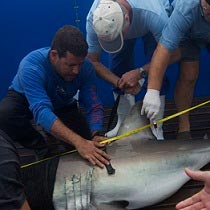
Movement ecology of white sharks
Read more...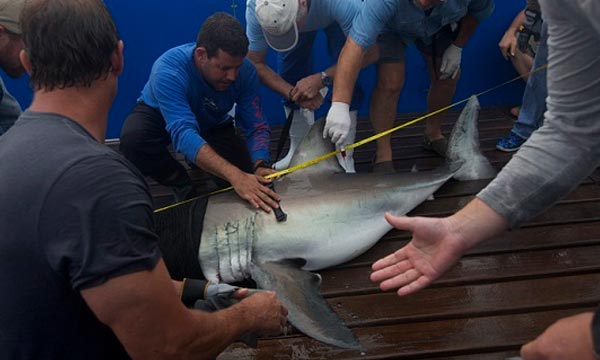
Movement ecology of white sharks
By acoustically and satellite tagging white sharks this project aims to describe the movement ecology and discuss the threats this species encounter in Southern AfricaDuring 2003 and 2004, Oceans Research scientists were part of the team whose white shark satellite tracking project broke new ground.
38 satellite transmitters (20 pop-offs, and 18 near real time) were placed on sharks at Mossel Bay, Gansbaai, and False Bay, South Africa. The project culminated with the migration of Nicole (a 3.6m female white shark) from South Africa to Australia and back. The discovery was published in ‘Science’ magazine.
In 2012, Oceans Research teamed up with Ocearch and 30 other scientists for the biggest white shark satellite tracking project so far. 43 white sharks were tagged with a mix of SPOT, PAT and RCODE tags. This project is foreseen to generate over 20 different scientific publications in the next 15 years.
-
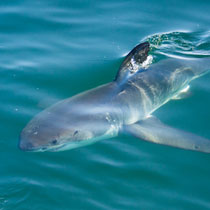
White Shark Populations
Read more...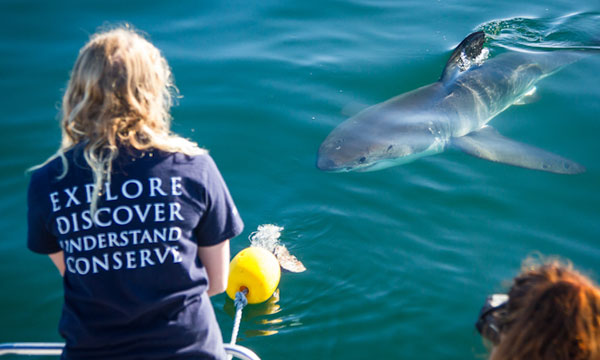
White Shark Populations
Oceans Research uses a combination of photo identification, acoustic telemetry and a mark-recapture modelling approach to assess and monitor the white shark population abundance and its trend, both for Mossel Bay and the southern African region.
This project has been running since 2001. Oceans Research is part of a national effort which will produce the first regional white shark population estimate for southern Africa.
-
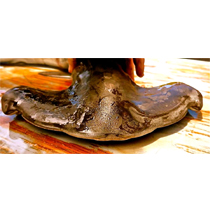
Hammerhead Shark ecology
Read more...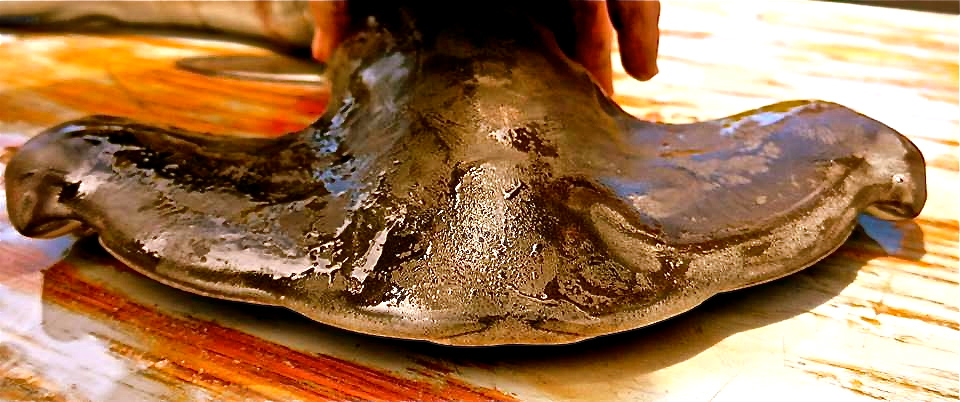
Hammerhead Shark ecology
Using mitochondrial DNA sequences and nuclear microsatellite markers we are assessing the kinship and parentage amongst smooth hammerhead sharks in Mossel Bay.
Additionally, the local genetic structure is being compared to a nearby population in KwaZulu-Natal.
The movement ecology of juvenile smooth hammerhead sharks is currently under investigation using passive acoustic trasmitters.
-
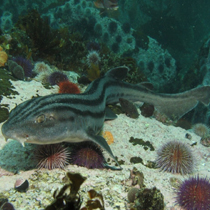
Benthic shark ecology
Read more...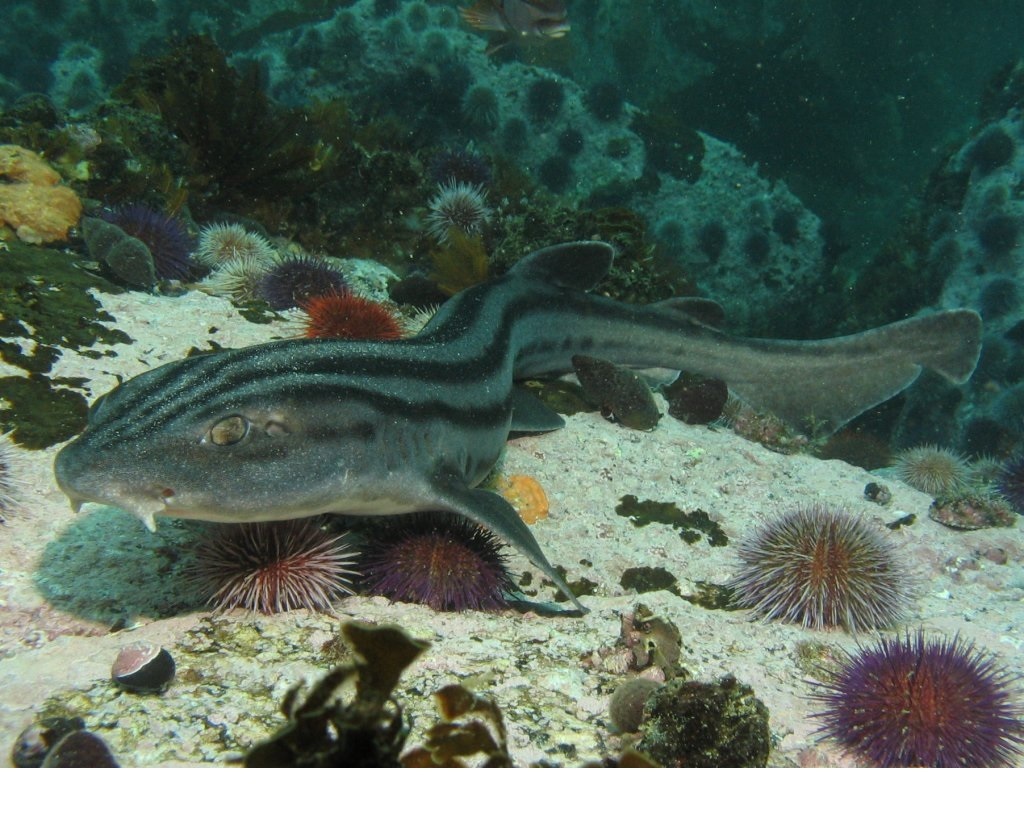
Benthic shark ecology
Through the use of acoustic telemetry, baited remote underwater video and gastric lavage, the movement and feeding ecology of sympatric endemic benthic catsharks is investigated.
-
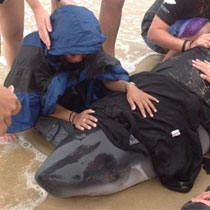
Marine Mammal Stranding Network
Read more...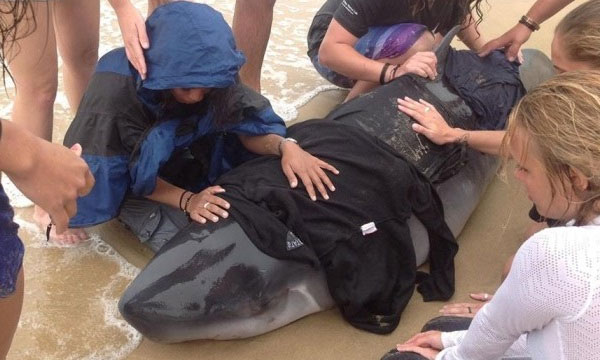
Marine Mammal Stranding Network
Training people who will be able to assist in rescue and data collection from marine mammal strandings.
Our marine mammal stranding response project and training program was established in collaboration with MARS (Marine Animal Response Society) a Canadian based stranding response organisation. The response protocol we adhere to has been developed from a worldwide tested system, who aims at the best response in terms of safety of the responders, animals and the general public. The four outcomes of any response are refloatation, rehabilitation if there are local facilities available, euthanasia or “letting nature take its course”. Every event is different and trained individuals must be on hand and well prepared to make an informed collective decision. We work closely with other strandings groups, veterinarians and the South African Department of Environmental Affairs to collect appropriate samples and data in all events and to ensure effective sharing of information.
We have hosted several training days for the local response group SMART and the NSRI Mossel Bay station 15, the Mossel Bay Municipality and Fire Department and we are continuously offering a one day training course to our interns and members of the public to train them in appropriate marine mammal response methods.
-
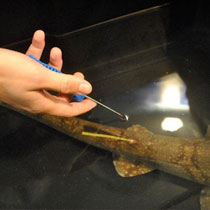
Shark Conventional Tag and Release
Read more...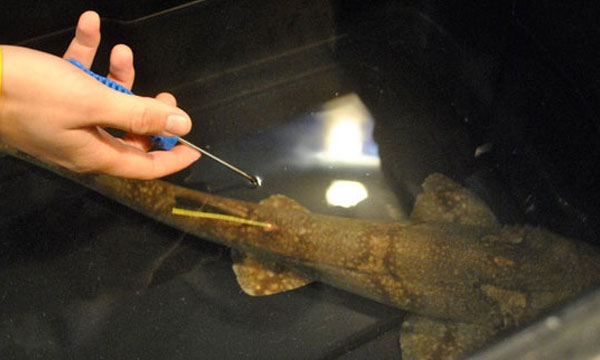
Shark Conventional Tag and Release
Oceans Research is an active participant in the ORI (Oceanographic Research Institute) tag and release program.
As part of the program the Shark Lab aims to establish baseline data including relative abundance, species and size composition, growth rates, sex ratios, habitat utilisation and preference, spatial and temporal distribution, seasonal variation, residency and site fidelity, individual recognition, survival, mortality and recruitment, recapture rates for small and medium sharks but also to monitor these shifts as potential anthropogenic modifications and developments take place within the bay.
-
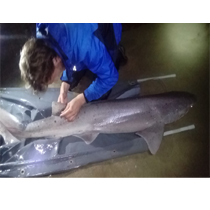
Shark Acoustic Tagging
Read more...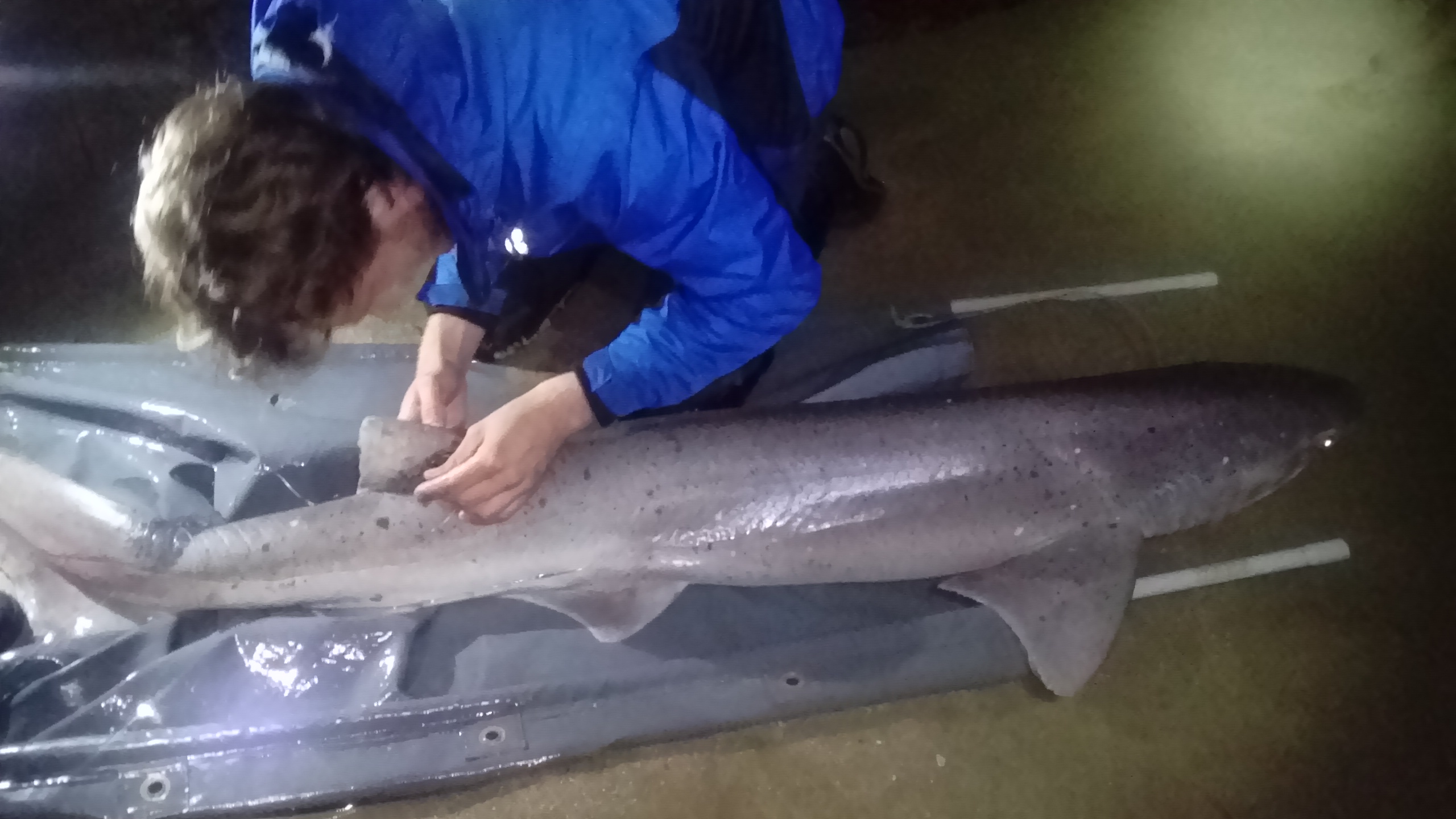
Shark Acoustic Tagging
Oceans Research is a deployment collaborator and an active participant in the Acoustic Tracking Array Platform (ATAP) and Ocean Tracking Network (OTN).
The aim of this multifaceted, multi-institutional, muti-species research project is to better understand the movement ecology of sharks within Mossel Bay and at a regional scale in Southern Africa.
The use of technologically advanced tools to remotely collect data about the whereabouts of tagged aquatic animals has gained popularity around the world. The deployment of acoustic telemetry arrays, or networks, are yielding unprecedented insights into movement ecology of studied animals, which in turn provide convincing data to shape corrective management decisions and policies.
-
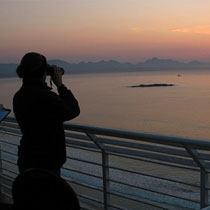
Marine Mammals Habitat Use
Read more...
Marine Mammals Habitat Use
By using a surveyor’s theodolite we are able to accurately track the movements of marine mammals up to several kilometres from shore.
Identifying areas of high use and the animal’s behaviour therein allows us to measure any impacts on those species from human activities.
The identification of important, localised, small scale habitat use is one key to understanding the ecology of large vertebrate predators in the bay and will help provide the information needed to manage the conservation of the ecosystem as a whole.
The expansion in 2010 of surveying activities to neighbouring Vlees Bay allows for a comparison between habitat use of cetacean species at the “impacted” site (Mossel Bay) and “control” site (Vlees Bay). This project has been running since 2009.
-
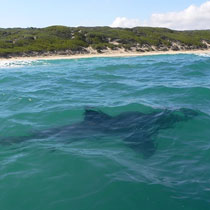
White Shark Habitat Use
Read more...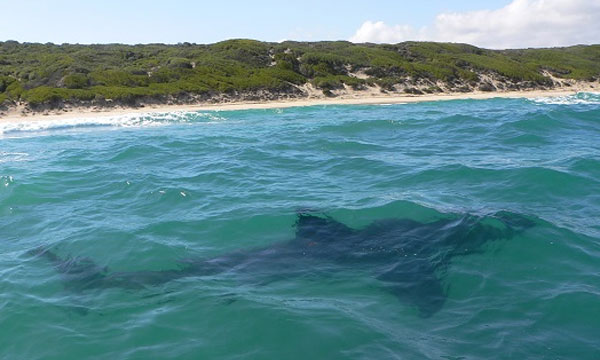
White Shark Habitat Use
This project uses a combination of passive and active acoustic telemetry to track fine scale tri-dimensional movements and habitat choice patterns of white sharks through time and space.
During over 2000 hours of tracking (30 white sharks, including the 3 longest continuous white shark acoustic tracking effort ever: 107, 106, 103 hours), Oceans Research has discovered unprecedented behaviours such night time hunting, feeding satiation, coastal patrolling patterns, amongst other breakthrough discoveries. This project has been running since 2005.
-
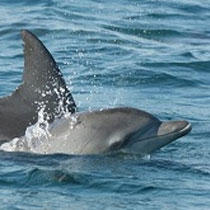
Dolphin Populations
Read more...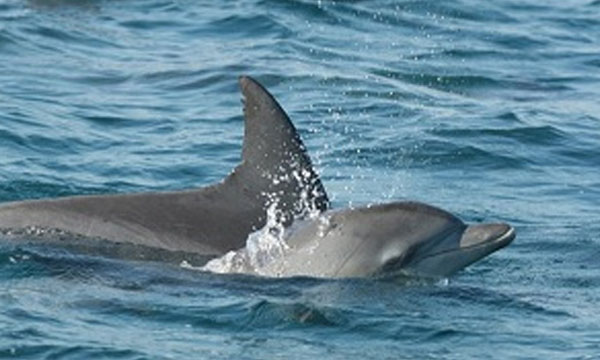
Dolphin Populations
The project is investigating the size of the populations by photographically identifying individual dolphins from natural marks and scars, which allows the team to look at individual dolphin movements and interactions and estimate the number of animals using the bay.
The overall aim is to generate an abundance estimate and future trend for (i) humpback and (ii) bottlenose dolphins in the Mossel Bay area. This project has been running since 2009.
-
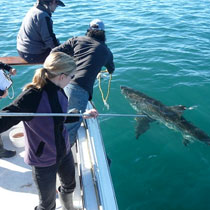
White Shark Genetics
Read more...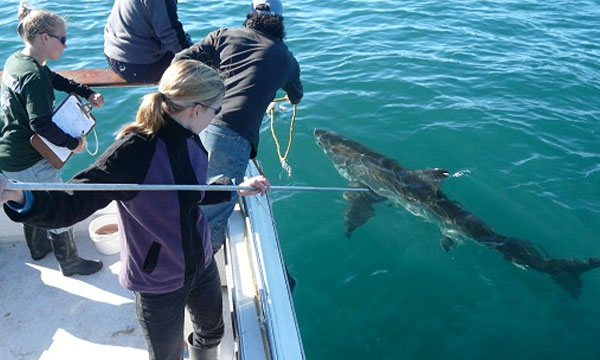
White Shark Genetics
This project aims to use genetic sampling to establish genetic relationships of white sharks within South Africa and internationally.
This project has been running since 2005 in collaboration with the University of Aberdeen (Scotland).
-
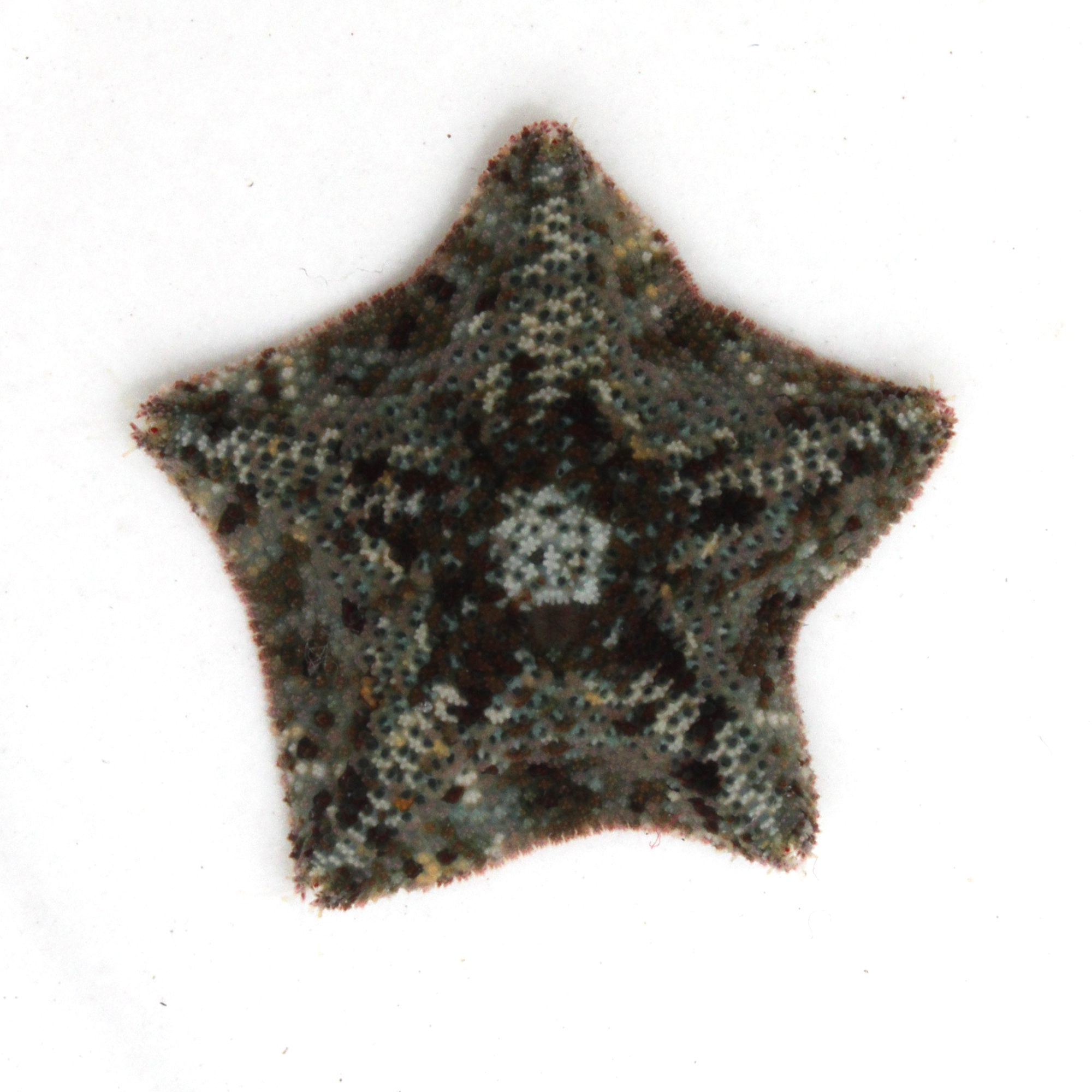
Evolutionary Movement Ecology of dwarf cushion stars
Read more...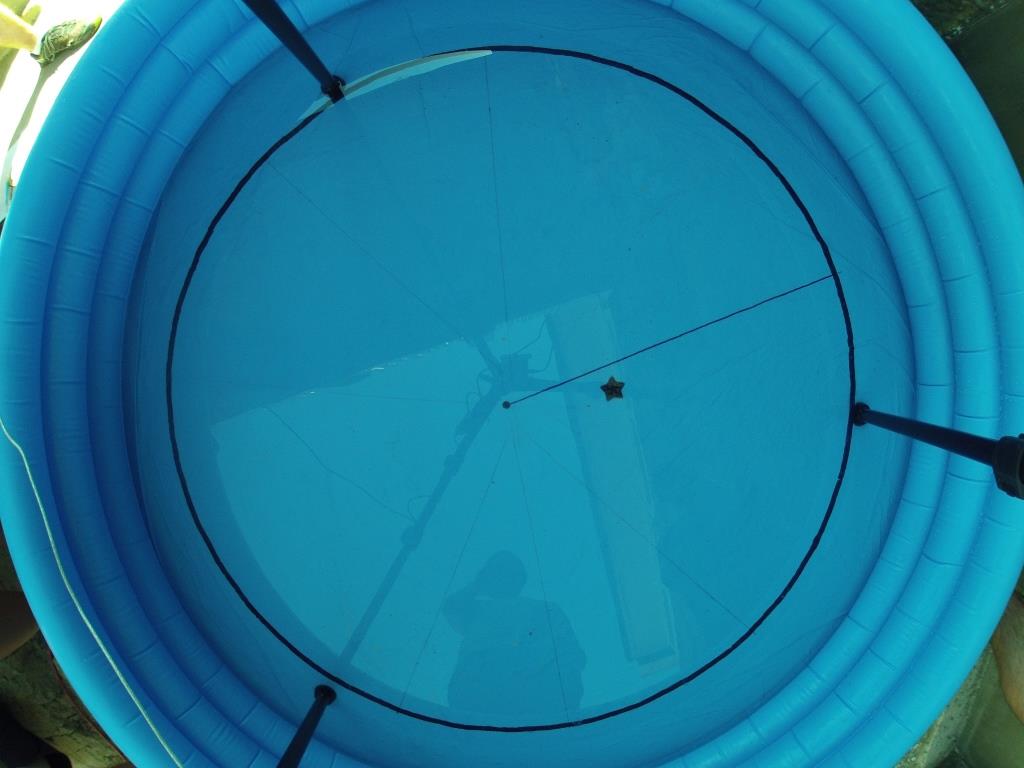
Evolutionary Movement Ecology of dwarf cushion stars
In the South African intertidal, two sympatric dwarf cushion stars operate as functional herbivores and play important roles in the structuring of rocky and sandflat communities.
These sympatric species, appear nearly identical and differ mainly in the placement of the gonopores, one with oral gonopores and attaching eggs to the surface of the substrate, and the other possessing aboral gonopores that release larva directly into the water.
For such an organism, it can be hypothesised that natural selection will optimise movement patterns in relation to the method of larval distribution, with egg depositing species requiring more movement, and egg dispersing species requiring less, as they can rely on dispersal for ocean currents.
The aim is to understand and model their movement patterns and draw evolutionary conclusions based of the differing patterns of reproduction.
-
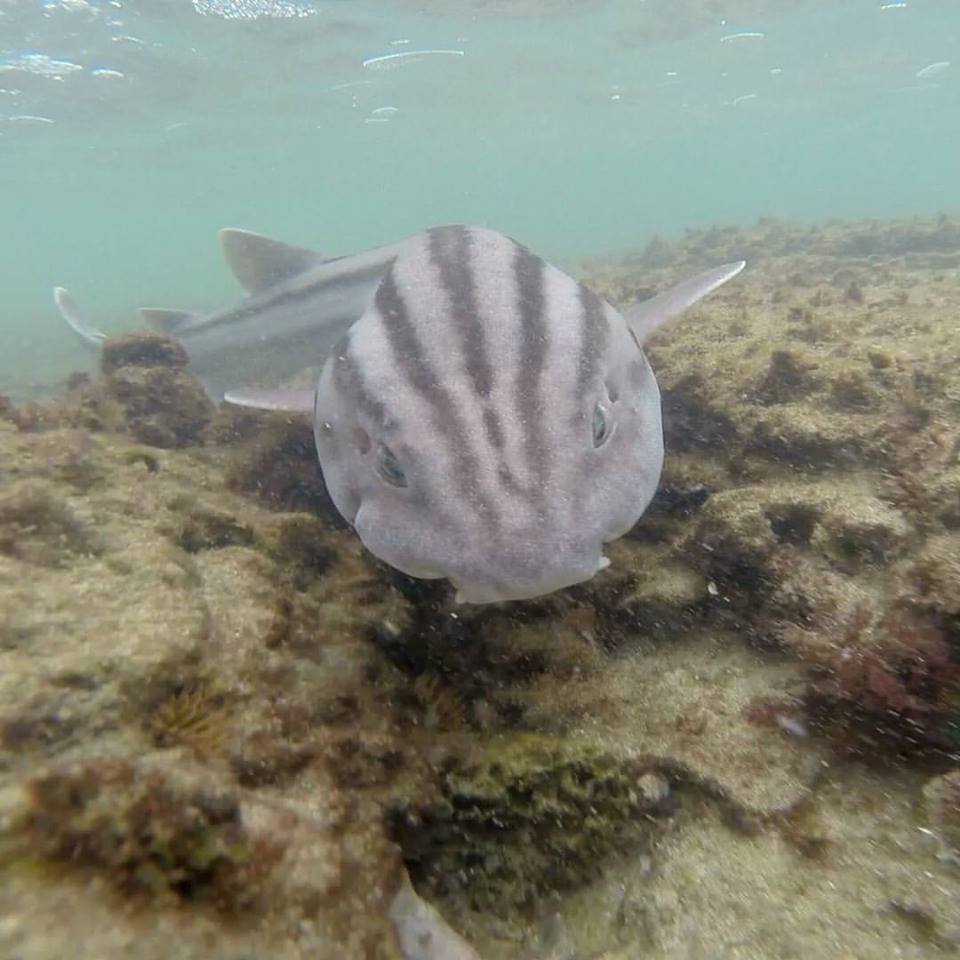
Energetic ecology and habitat utilisation of pyjama sharks
Read more...
Energetic ecology and habitat utilisation of pyjama sharks
This MSc project uses passive acoustic biotelemetry of Pyjama catsharks (Poroderma africanum) to determine their movement patterns and energetic ecology.
The first part of the project will focus on the movement patterns and activity rates of Poroderma africanum within Mossel Bay, coupling accelerometry with passive acoustic telemetry. The second part (conducted at the Two Oceans Aquarium of Cape Town) aims at describing the healing process of internally tagged sharks.
Physiological research projects
-
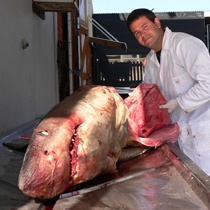
Thermal Physio-Ecology of the White Shark
Read more...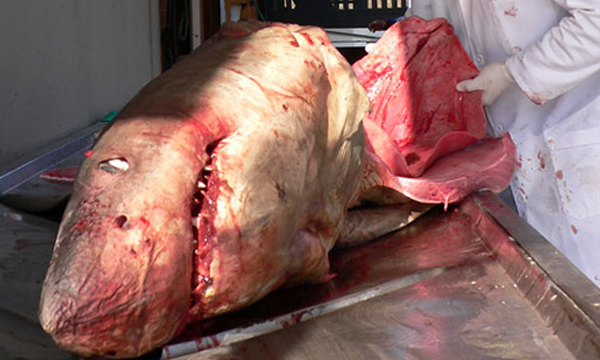
Thermal Physio-Ecology of the White Shark
The white shark is one of few elasmobranch species capable of maintaining parts of its body warmer than the surrounding environment.
Very little is known about the thermal physiology of white sharks in the wild, since studying these large, highly mobile and potentially dangerous predators, often in rough sea conditions, is challenging.
This project has made use of multi-sensor acoustic telemetry to determine their habitat use, movement patterns and thermal ecology in Mossel Bay. This project has been running since 2008.
-
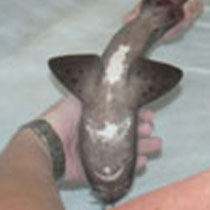
Shark Tonic Immobility
Read more...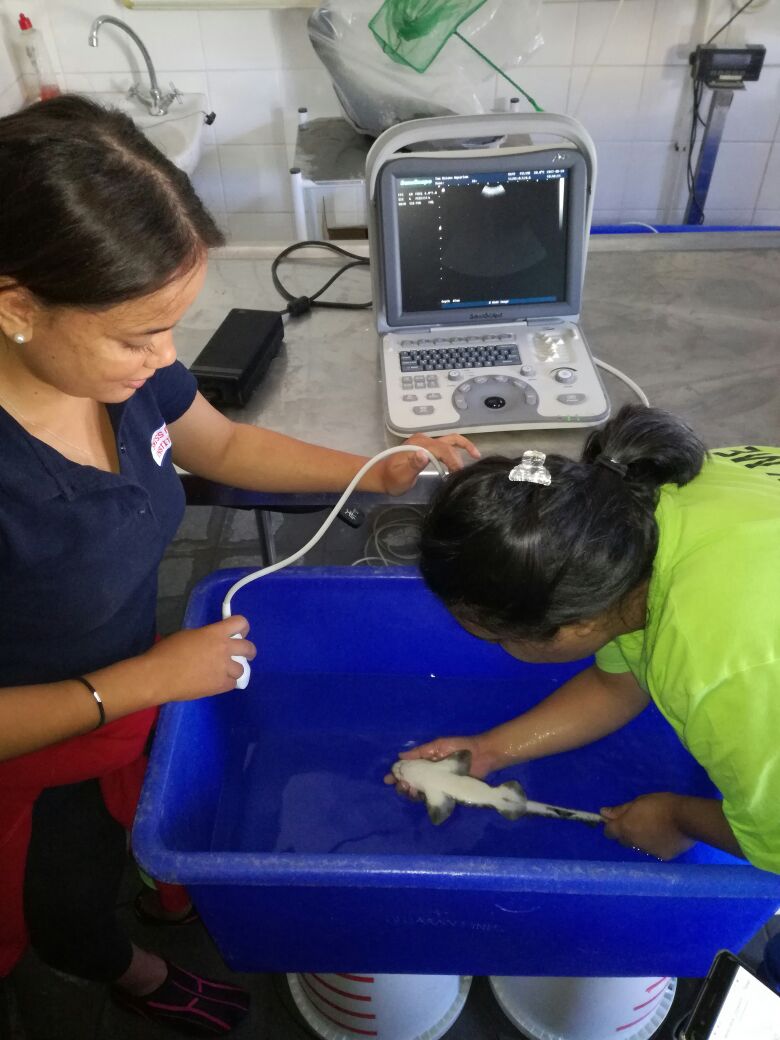
Shark Tonic Immobility
This project aims to address major gaps in our understanding of the phenomenon of tonic immobility or “death feigning”.
Tonic Immobility is a type of unlearned behavioural response characterized by a state of torpor. It has been considered as a defence mechanism against predators that is shared by animals such as fish, mammals, reptiles, birds and insects. However, given the habitat and known predators of sharks it does not seem likely that it would serve as an anti-predator strategy. Evidence seems to suggest that tonic immobility may play a role in the reproductive behaviour of some sharks.
However, the biological significance of the response in elasmobranchs remains uncertain. When looking specifically at mating, males subject females to tonic immobility, but if tonic was evolutionary related to mating, then females should be more susceptible to tonic immobility than males. Then why then males are also prone to it?
This project will look at species specific and gender specific responses to tonic immobility in two species of endemic catsharks: the puffadder shyshark (Haploblepharus edwardsii) and dark shyshark (Haploblepharus pictus).
-
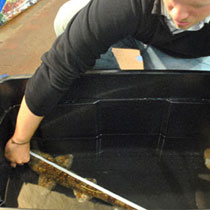
Morphometrics of sharks
Read more...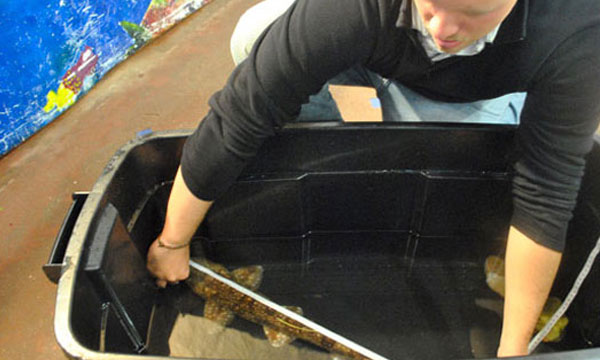
Morphometrics of sharks
Defining species specific weight to length ratios helps to manage, regulate and maintain specimen health, against the manifestation of extreme conditions.
Captive feeding ration is dependent on many factors, and is therefore, not universally applicable under all circumstances and requires empirical adjustment.
Therefore establishing length-weight (L-W) equations for sharks held within the Shark Lab, sharks caught from commercial fisheries, and from tagged and released wild individuals, is necessary for managing the health of captive individuals but also the health of wild stocks and the entire ecosystem. This project has been running since 2009.
Behavioural Research Projects
-
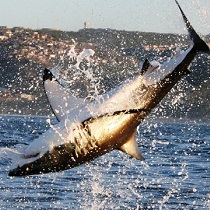
Predator-Prey Behavioural Games
Read more...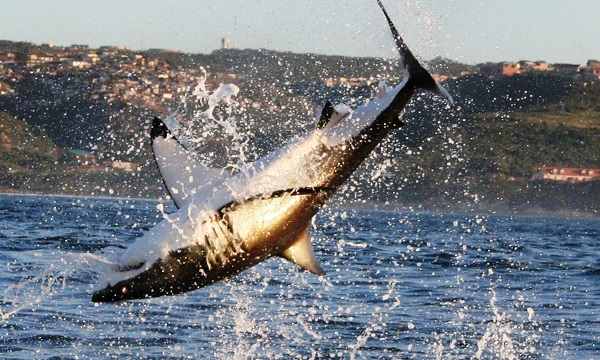
Predator-Prey Behavioural Games
This study aims to describe and understand the dynamic behaviours played out between Cape fur seals and white sharks. Research into the behavioural strategies adopted by these species is revealing new insights into their behavioural co-adaptation.
This project has been running since 2001.
-
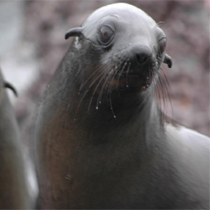
Animal syndroms and personalities
Read more...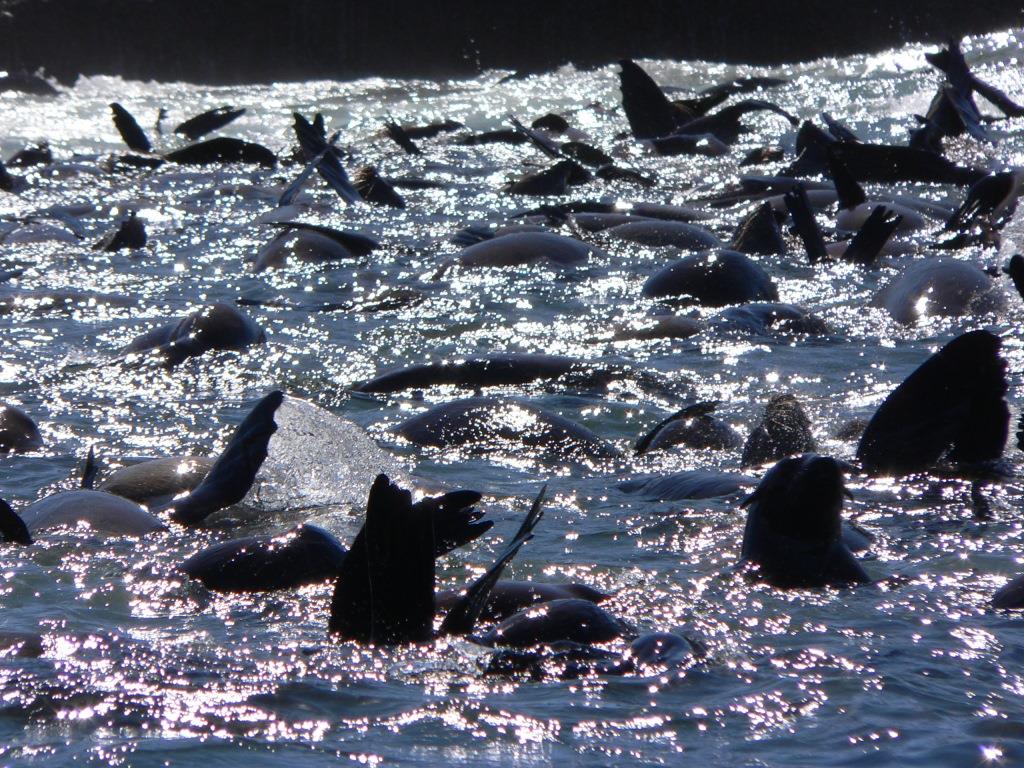
Animal syndroms and personalities
Quantify personality in non-model organisms like white sharks, Cape fur seals and cat sharks, will enhance our understanding of how personality affects the performance of the arm-race between predators and prey in the effort to survive.
-
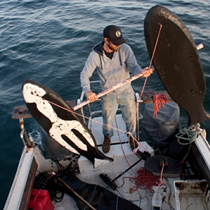
Utilizing Orca Whale Sign Stimuli to Deter White Sharks
Read more...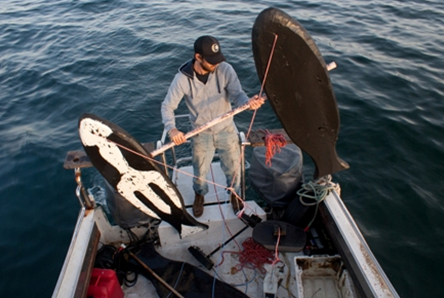
Utilizing Orca Whale Sign Stimuli to Deter White Sharks
In collaboration with the University of Pretoria and Human Wildlife Solutions we are investigating alternative methods of deterring white sharks by using killer whale sign stimuli which have the potential to act as a natural threat to white sharks.
This research may be utilized to increase safety for recreational ocean users and help reduce shark-human conflicts in a sustainable and non lethal way. This project has been running since 2013.
-
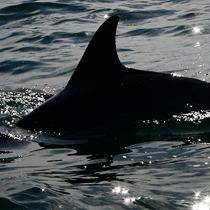
Interspecific Interactions
Read more...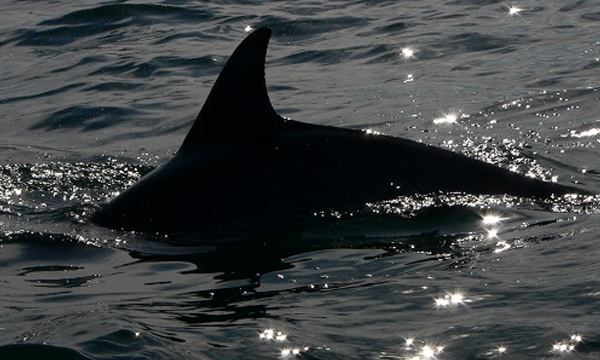
Interspecific Interactions
Competition between competing predator species can have a profound effect on the habitat use patterns of animals.
Bottlenose dolphins are known to harass several other species of dolphin and porpoise.
By simultaneously tracking groups of humpback and bottlenose dolphins we will be able to investigate behavioural interactions between these species. Furthermore white sharks share the same habitat to those dolphins species and all these interactions play an important role in habitat selection and behaviour of dolphins and sharks in the bay. This project has been running since 2009.
-
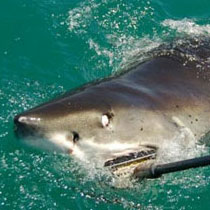
Great white shark bite strength
Read more...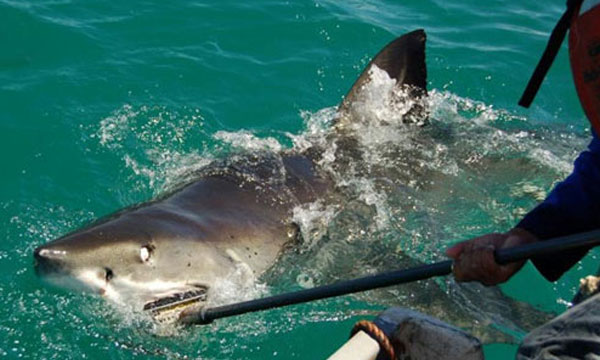
Great white shark bite strength
This research studies the power and dynamics of a white shark’s bite using a bite force meter, custom designed by National Geographic. Since 2005, a database of over 165 bites has been assembled.
The voluntary bite force of sampled white sharks varied immensely, and opened up new insight into the understanding of the role of the white sharks bite anatomy in establishing it as an apex marine predator, but as well gives clues on why white sharks do not actually hunt people. This project ran in 2005.
Environmental Research Projects
Past research projects
- Estimation of the Impact of the White Shark Cage Diving on White Shark Behaviour (2001-2005)
- Ecosystem Energy Modelling (2008)
- Shark Anaesthetics (2008)
- Estimation of White Shark Photo ID Efficiency (2009)
- Impact of the biggest desalination plant on white sharks marine mammals species and the oceanographic conditions of the Mossel Bay (2010-2012)
- Impact of Dissolved Oxygen Levels on White Shark Habitat Use (2010-2012)
- Feeding Regimes in Captive Benthic Sharks (2011)
- Description of the swimming behaviour of the common smoothhound shark based on tri-axial accelerometer data (2012)